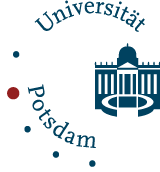History of the Archive
In December 2001, the issuance of the 38th publication marked the end of the genesis of the Berlin-Brandenburgish Dictionary, which began in the first decade of the twentieth century. The four-volume dictionary offers comprehensive insight into the use of Märkisch Low German in Brandenburg and thereby preserves a dialect that is threatened today, for a variety of reasons, with a slow disappearance. Because the surveys were not limited to Märkisch dialect boundaries, which extend beyond the state of Brandenburg to Saxony-Anhalt and include the three former GDR districts of Potsdam, Frankfurt an der Oder, and Schwerin, the archive also includes sources and data on Berlin as well as the southern part of Brandenburg, which forms a broad transitional border to Middle German.
The extensive archive that constitutes the basis for the dictionary was handed over in 2002 from the Saxon Academy of Sciences in Leipzig to the Professor for Language History at the Department of German Language and Literature at the University of Potsdam so that it would be available to the public and to researchers for ongoing research purposes.
Hermann Teuchert, a head teacher in Berlin, began in the early twentieth century to assemble the first collections for a dictionary that initially was planned to have only one volume. When he was appointed as professor at the University of Rostock, work on this project came to a halt, but he later provided his numerous records to the dictionary archive.
In 1939, Anneliese Bretschneider took over the job of building up a new collection. Despite the outbreak of the Second World War, she dedicated herself intensively to an evaluation of the various dialect atlases and regional literature. Notwithstanding the loss of a majority of the holdings stored in the Prignitz, the German Commission of the German Academy of Sciences in Berlin decided in 1949 to commission the Berlin-Brandenburg Dictionary in a series of dialect dictionaries supervised by the Commission. Under the leadership of Ernst Hadermann, the organizational requirements for the collections were completed; in 1950, a new position was created for this purpose on the premises of the State University of Potsdam. Like other dialect dictionaries in the GDR, the Berlin-Brandeburgish Dictionary (BBW) became a research project by the German Academy of Sciences and was associated with the Academy from a scholarly and organizational perspective. Anneliese Brettschneider directed efforts on the dictionary from 1956 to 1959, and in 1959 the position was moved from Potsdam to Berlin.
From 1959 to 1979, efforts on the dictionary were directed by Gerhard Ising, who in many ways was a godsend; the work on the dictionary came under fire many times in the 1960s and 1970s, and the project was able to continue largely due to his dedication. The first publications took place in 1965. Under the leadership of Joachim Wiese, work on the dictionary came to a successful conclusion in 2001, with only a few people working on it.
The Brandenburgish Language Landscape
The Brandenburgish linguistic landscape is the result of various settlement and integration processes that reach back far into the past. Even if Low German is the essential foundation, there are also influences from Dutch, Germanic, Slavic, East Middle German, French, and other languages.
